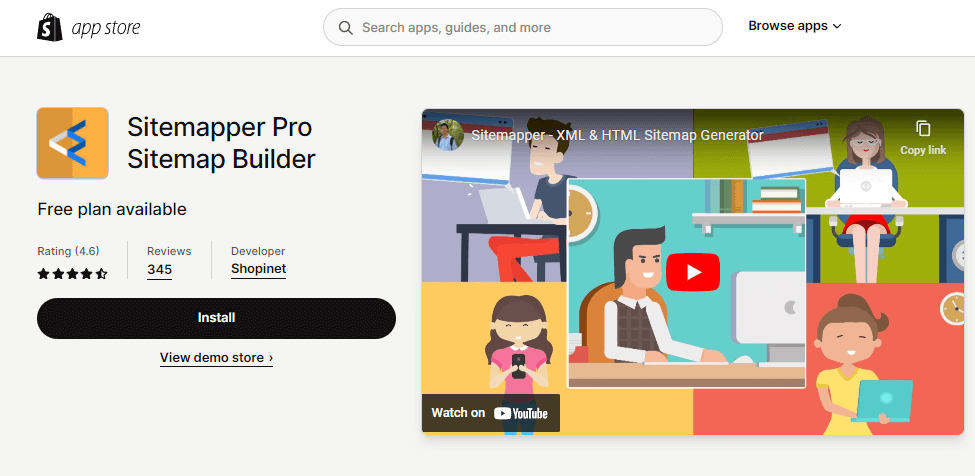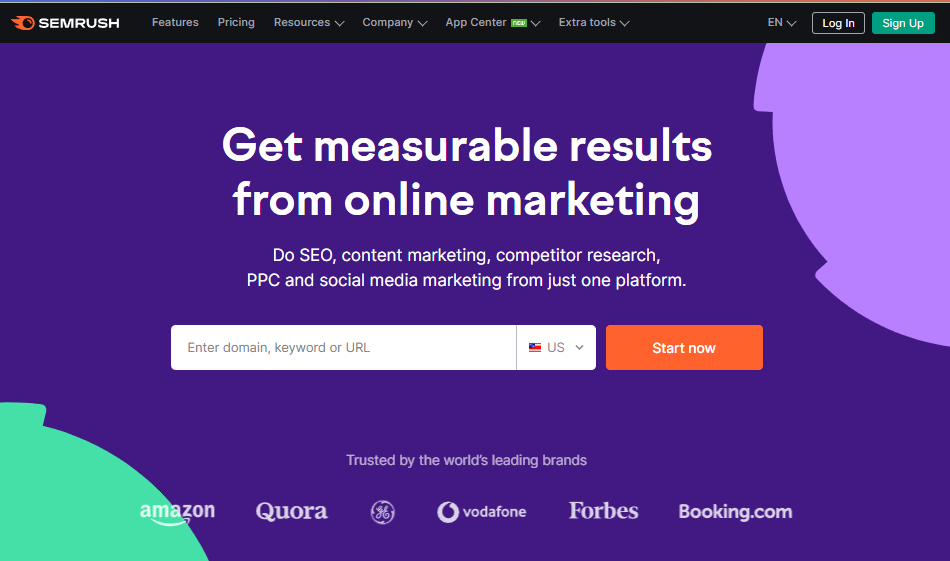At its core, a Shopify sitemap is a roadmap for search engines, providing them with a structured outline of your online store’s content. It’s the digital equivalent of a well-organized store directory, helping search engines navigate and index your web pages efficiently.
Understanding and optimizing your Shopify sitemap can significantly enhance your store’s SEO performance. It’s a fundamental step in improving your store’s visibility in search engine results, attracting organic traffic, and ultimately boosting your eCommerce success.

Throughout this blog, we’ll delve into the intricacies of Shopify sitemaps, exploring their different types, how to create and submit them, and the remarkable impact they can have on your Shopify store’s SEO.
Understanding Shopify Sitemap
When it comes to Shopify sitemaps, there are two primary types to be aware of:
- XML Sitemaps: XML (Extensible Markup Language) sitemaps are designed specifically for search engines. They provide a structured, machine-readable blueprint of your website’s pages, posts, products, and categories. These sitemaps are instrumental in helping search engine crawlers understand the organization of your Shopify store and index its content efficiently.
- HTML Sitemaps: HTML (Hypertext Markup Language) sitemaps are primarily designed for human visitors. They are web pages that display a list of links to various sections of your site, offering a user-friendly way to navigate your online store. While not as crucial for SEO as XML sitemaps, HTML sitemaps can enhance the user experience by making your site more accessible.
How Sitemaps Work for Search Engines
Sitemaps act as navigational aids for search engine crawlers, such as Googlebot. When a search engine crawler visits your site, it looks for the sitemap file (usually named “sitemap.xml”) in your site’s root directory. Once found, the crawler reads the sitemap to understand the structure of your site and identify important pages.
This information helps search engines prioritize crawling and indexing, ensuring that your most critical and updated pages are included in search results promptly. Without a sitemap, search engines might overlook some of your pages or take longer to discover them.
Benefits of Having a Well-Structured Sitemap
- Enhanced SEO: Sitemaps improve the discoverability of your content by search engines. They help search engine crawlers find and index your pages more efficiently, potentially leading to higher rankings in search results.
- Faster Indexing: With a sitemap, new content and changes to your site can be indexed more quickly. This is especially crucial for eCommerce stores that frequently update product listings and promotions.
- Improved User Experience: HTML sitemaps make it easier for human visitors to navigate your store, enhancing their overall experience and encouraging longer site visits.
- Error Identification: Sitemaps can highlight issues like broken links or pages that return errors, enabling you to address them promptly for a smoother user experience.
Creating Your Shopify Sitemap
One of the advantages of using Shopify as your eCommerce platform is that it automatically generates essential sitemaps for your store. These sitemaps include:
- XML Sitemap: As mentioned earlier, XML sitemaps are crucial for search engines. Shopify automatically generates an XML sitemap that includes product pages, collection pages, blog posts, and other essential content. This automated process ensures that your store’s new pages and products are promptly included in search engine indexes.
- HTML Sitemap: Similarly, Shopify generates an HTML sitemap for your online store. This user-friendly sitemap helps visitors navigate your site with ease, finding the products and information they’re looking for. You can typically access your HTML sitemap by adding “/pages/sitemap” to your store’s URL.
While Shopify automatically generates sitemaps for your store, there may be instances where you want more control over your sitemaps or need to create additional ones. This can be done manually by following these steps:
XML Sitemap
To manually create or edit your XML sitemap, you can use Shopify’s built-in sitemap generator. Here’s how:
- Log in to your Shopify admin dashboard.
- Navigate to “Online Store” and click on “Preferences.”
- Scroll down to the “Search engines” section.
- Under “Sitemap,” click the “Generate sitemap.xml” button. This action regenerates your XML sitemap, including all relevant pages.
HTML Sitemap
For custom:
- In your Shopify admin dashboard, go to “Online Store” and select “Pages.”
- Click “Add page” to create a new page.
- Title the page something like “Sitemap.”
- In the page content, manually list the links you want to include in your HTML sitemap. These may include collections, product categories, and important pages.
- Save the page, and you’ll have a manually created HTML sitemap accessible to your website visitors.
Ensuring Sitemap Accuracy and Completeness
Whether your sitemaps are generated automatically or manually, it’s essential to ensure their accuracy and completeness. Here are some best practices:
- Regular Updates: Keep your sitemaps up to date. If you add new products, categories, or blog posts, regenerate your XML sitemap to reflect these changes.
- Check for Errors: Periodically review your sitemaps for errors, such as broken links or URLs that lead to non-existent pages. Correct any issues promptly to maintain a smooth user experience.
- Submit to Search Engines: After creating or updating your XML sitemap, submit it to major search engines like Google and Bing through their respective webmaster tools. This step ensures that search engines are aware of your sitemap and can crawl your site more efficiently.
By having accurate and up-to-date sitemaps, you enhance the SEO performance of your Shopify store, making it easier for both search engines and visitors to navigate and discover your content.
Optimizing Your Shopify Sitemap for SEO
When optimizing your Shopify sitemap for SEO, ensure that it includes all essential pages and products that you want search engines to index. These may include:
- Product pages
- Collection pages
- Blog posts
- Informational pages (About Us, Contact, FAQs)
- Special offer pages
- Landing pages
Surfer SEO is a great SEO software tool for optimizing various types of web pages, including product pages, collection pages, blog posts, informational pages (About Us, Contact, FAQs), special offer pages, and landing pages, because it offers data-driven insights and recommendations that can improve on-page SEO elements such as content quality, keyword usage, structure, and more.

Alternatively, SEMRush makes a good option. This SEO tool’s versatile toolkit allows users to optimize content, track keyword rankings, monitor website health, and conduct detailed SEO research for different types of web pages, helping improve their search engine visibility and overall performance.

By analyzing top-performing pages for specific keywords and providing actionable suggestions, these SEO tools helps ensure that each type of web page is well-optimized for search engines, resulting in better visibility and rankings in search results, which is crucial for attracting organic traffic and driving conversions.
Using Descriptive and Keyword-Rich URLs
The URLs within your sitemap play a crucial role in SEO. Ensure that your URLs are:
- Descriptive: Use clear and concise URLs that reflect the content of the page or product. Avoid generic or vague URLs that provide little information to users and search engines.
- Keyword-Rich: Incorporate relevant keywords into your URLs, especially for product and category pages. This helps search engines understand the topic and context of the page, potentially boosting your rankings.
- Hyphenated: Use hyphens (-) to separate words in URLs rather than underscores (_) or spaces. Hyphens are more SEO-friendly and improve readability.
Maintaining a Logical Hierarchy
Organize your sitemap in a logical hierarchy that reflects the structure of your website. This hierarchy aids both search engines and users in understanding the relationships between different pages and products. For example:
- Group related products under appropriate categories and collections.
- Arrange blog posts by topics and categories.
- Create parent and child pages to indicate subpages and their associations.
A well-structured sitemap improves the user experience by making it easier for visitors to navigate your site, which can positively impact SEO.
Regularly Updating the Sitemap
SEO is an ongoing process, and your sitemap should reflect the most current state of your website. Regularly update your sitemap to include new pages, products, or blog posts. Additionally, remove any outdated or redundant entries from your sitemap to maintain its accuracy.
By optimizing your Shopify sitemap following these practices, you can enhance your website’s SEO performance and ensure that search engines effectively crawl and index your content. A well-structured and up-to-date sitemap contributes to improved search rankings and better user experiences.
Submitting Your Shopify Sitemap to Search Engines
To ensure that your Shopify sitemap is indexed by search engines, particularly Google, you can utilize Google Search Console. Here’s how:
- Sign in to your Google Search Console account or create one if you haven’t already.
- Add and verify your website property. You’ll need to prove ownership to access your website’s data.
- Once your property is verified, click on it to access the property’s dashboard.
- In the left-hand menu, under “Index,” select “Sitemaps.”
- Click on the “Add/Test Sitemap” button.
- Enter the URL of your Shopify sitemap. Typically, this is in the format: `sitemap.xml`.
- Click the “Submit” button.
Google Search Console will then process your sitemap submission. It may take some time for Google to crawl and index the URLs in your sitemap. You can check the indexing status and any potential issues related to your sitemap within the Search Console.
Verifying Sitemap Submission
After you’ve submitted your sitemap to Google Search Console, it’s essential to verify that it has been successfully processed. You can do this by:
- Returning to the “Sitemaps” section of Google Search Console.
- You should see the submitted sitemap listed there, along with the number of indexed pages if available.
If your sitemap is listed and indexed pages are shown, it indicates that Google has successfully processed your sitemap. However, keep in mind that indexing may take some time, and not all pages may be indexed immediately.
Monitoring Sitemap Indexing
Regularly monitor the indexing status of your sitemap in Google Search Console. This provides valuable insights into how well your site is performing in search results. Here are some tips for monitoring sitemap indexing:
- Check the “Coverage” Report: This report in Google Search Console is a valuable tool for website owners and SEO professionals. It provides insights into how Googlebot is crawling and indexing your site. By examining the “Coverage” report, you can identify specific issues that might be preventing certain pages on your website from being indexed.
- Review the “Performance” Report: The “Performance” report provides valuable insights into how well your site is performing in Google’s search results. It includes metrics such as click-through rates (CTR), total clicks, total impressions, and average position.
- Set Up Email Notifications: To stay informed about any issues or critical errors related to your sitemap, you can configure email notifications within Google Search Console.
Common Issues and Troubleshooting
While working with Shopify sitemaps, you may encounter errors that can affect your website’s SEO performance. Here are some common sitemap errors and how to resolve them:
- XML Sitemap Not Found: If you can’t locate your XML sitemap, ensure that it’s correctly generated by Shopify. You can typically find it at
yourstore.com/sitemap.xml. - Incorrect URL Formatting: Ensure that the URLs listed in your sitemap are correctly formatted, and there are no typos or missing characters.
- Submission Errors: If you encounter issues when submitting your sitemap to Google Search Console, double-check that the sitemap URL is accurate and accessible. Also, ensure you’ve correctly verified your website in Google Search Console.
- 404 Errors: If URLs in your sitemap lead to 404 (Not Found) pages, review your website’s URL structure and update the sitemap accordingly. Ensure that all listed URLs are valid and exist on your website.
- XML Sitemap Not Updating: If your sitemap isn’t updating automatically, verify that your content management system (CMS) settings are correctly configured for automatic sitemap generation.
Ensuring Sitemap Consistency with Your Website
Sitemap consistency is crucial for SEO. Your sitemap should accurately reflect your website’s structure and content. To ensure consistency:
- Regularly Update Your Sitemap: Your website is dynamic, with pages and products constantly being added, modified, or removed. To keep search engines informed and ensure they have access to the most current information about your site, it’s crucial to regularly update your sitemap.
- Cross-referencing your sitemap: This helps with your website’s structure helps ensure that no critical sections or pages are inadvertently omitted from the sitemap. This completeness is vital to guarantee that search engines can locate and index all of your site’s relevant content.
- Consistency Is Key: Consistent URLs ensure that search engine crawlers can easily find and access your content. Mismatches, such as incorrect URLs or missing pages, can result in crawl errors and negatively impact your site’s search engine ranking.
Handling Duplicate Content Issues
Duplicate content can negatively impact your SEO efforts. To address this issue within your Shopify sitemap:
- Identify duplicate content: Search engines aim to provide diverse and relevant search results to users. When there’s a lot of duplicate content, it can be challenging for search engines to determine which page is the most relevant to display in search results. This can potentially lead to lower rankings for your pages.
- Implement canonical tags: Canonical tags help consolidate ranking signals for duplicate pages, preventing them from competing with each other. This can lead to better search engine rankings for the preferred page and a more efficient crawl budget.
- Structure Product Variants in Sitemap: Properly structured product variants in your sitemap make it clear to search engines that these are separate products, each with its own unique attributes. This helps search engines index and rank each variant appropriately.
- Use Built-In Shopify Tools: Shopify’s product variant settings enable you to specify unique details and descriptions for each product variant. This ensures that variant pages are not flagged as duplicates by search engines.
Benefits of an Optimized Shopify Sitemap
By understanding the benefits of an optimized Shopify sitemap, you can harness its potential to improve your website’s search engine rankings, enhance the user experience, and ensure that your new content gets the attention it deserve. Here are the benefits you get out of an optimized sitemap:
Improved Search Engine Rankings
One of the primary benefits of having an optimized Shopify sitemap is improved search engine rankings. When search engines like Google can efficiently crawl and index your website’s pages and content, it increases the likelihood of your site appearing in relevant search results. This improved visibility can lead to higher organic traffic and a stronger online presence.
Enhanced User Experience
An optimized sitemap not only benefits search engines but also enhances the user experience on your Shopify store. Users can navigate your site more easily, find the products or information they’re looking for, and enjoy a smoother browsing experience. This can result in longer time spent on your site, reduced bounce rates, and higher chances of conversions.
Increased Discoverability of New Content
When you regularly update and submit an optimized sitemap, search engines become aware of any new content or changes on your website faster. This means that freshly added products, blog posts, or pages are more likely to be indexed promptly. As a result, your latest offerings or updates become discoverable to your target audience sooner, potentially driving more traffic and engagement.
Best Practices for Ongoing Sitemap Maintenance
Conducting an ongoing sitemap maintenance ensures that your Shopify store’s sitemap remains accurate, up-to-date, and in compliance with SEO guidelines. This proactive approach will contribute to the long-term success of your eCommerce website in search engine rankings and user experience.
Here are some key tips to remember:
Regular Sitemap Updates
Maintaining an up-to-date sitemap is crucial for ensuring that search engines accurately reflect your website’s content. As you continue to add, modify, or remove pages and products on your Shopify store, it’s essential to update your sitemap accordingly. Regularly generate a new sitemap and submit it to search engines to keep them informed about any changes.
Monitoring Website Changes
Consistently monitoring your website for changes is an integral part of sitemap maintenance. Whenever you make alterations to your site’s structure, such as creating new categories, adding product variants, or restructuring your content, these changes should be reflected in your sitemap. Keeping a watchful eye on your website’s evolution helps maintain sitemap accuracy.
Adapting to Evolving SEO Guidelines
Search engine optimization (SEO) guidelines and algorithms are subject to frequent updates. It’s essential to stay informed about these changes and adapt your sitemap and overall SEO strategy accordingly. Pay attention to best practices recommended by search engines like Google and make adjustments as needed to ensure your sitemap aligns with the latest SEO standards.
Final Thoughts
Optimizing your Shopify sitemap is a fundamental step in enhancing the visibility and performance of your eCommerce store. By following the key steps outlined in this guide, you can ensure that your sitemap is accurately representing your website’s content to search engines and providing an improved user experience.
As a Shopify store owner, implementing these strategies can have a significant impact on your website’s search engine rankings, user experience, and overall success in the competitive eCommerce landscape.
By regularly maintaining your sitemap and adhering to SEO best practices, you’re well-positioned to attract more visitors and drive growth. If you’d like professional assistance with optimizing your Shopify store’s SEO, including sitemap management and other strategies, Mapplinks is here to help.
Our team of experts is dedicated to ensuring your eCommerce venture thrives in the digital realm. Contact us today to explore how we can collaborate to boost your Shopify store’s SEO performance.



